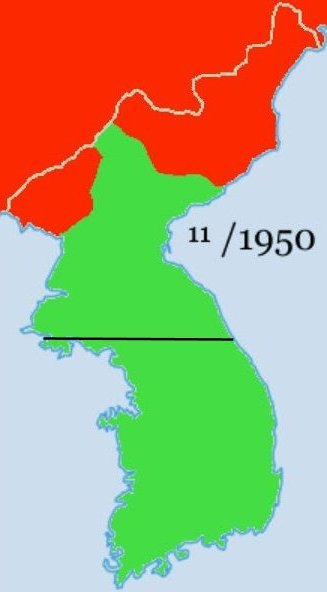
|
Korean War Time Line June 1950 to July 1953 6. Position of Forces in November 1950
After secretly crossing the Yalu River on 19 October, the PVA 13th Army Group
launched the First Phase Offensive on 25 October, attacking the advancing U.N.
forces near the Sino-Korean border. This military decision made solely by China
changed the attitude of the Soviet Union. Twelve days after Chinese troops
entered the war, Stalin allowed the Soviet Air Force to provide air cover, and
supported more aid to China. After decimating the ROK II Corps at the Battle of
Onjong, the first confrontation between Chinese and U.S. military occurred on 1
November 1950; deep in North Korea, thousands of soldiers from the PVA 39th
Army encircled and attacked the US 8th Cavalry Regiment with three-prong
assaults - from the north, northwest, and west - and overran the defensive position
flanks in the Battle of Unsan. The surprise assault resulted in the U.N. forces
retreating back to the Ch'ongch'on River, while the Chinese unexpectedly
disappeared into mountain hideouts following victory. It is unclear why the
Chinese did not press the attack and follow up their victory.
Back to Korean War Time Line June 1950 to July 1953 - Page 1 |